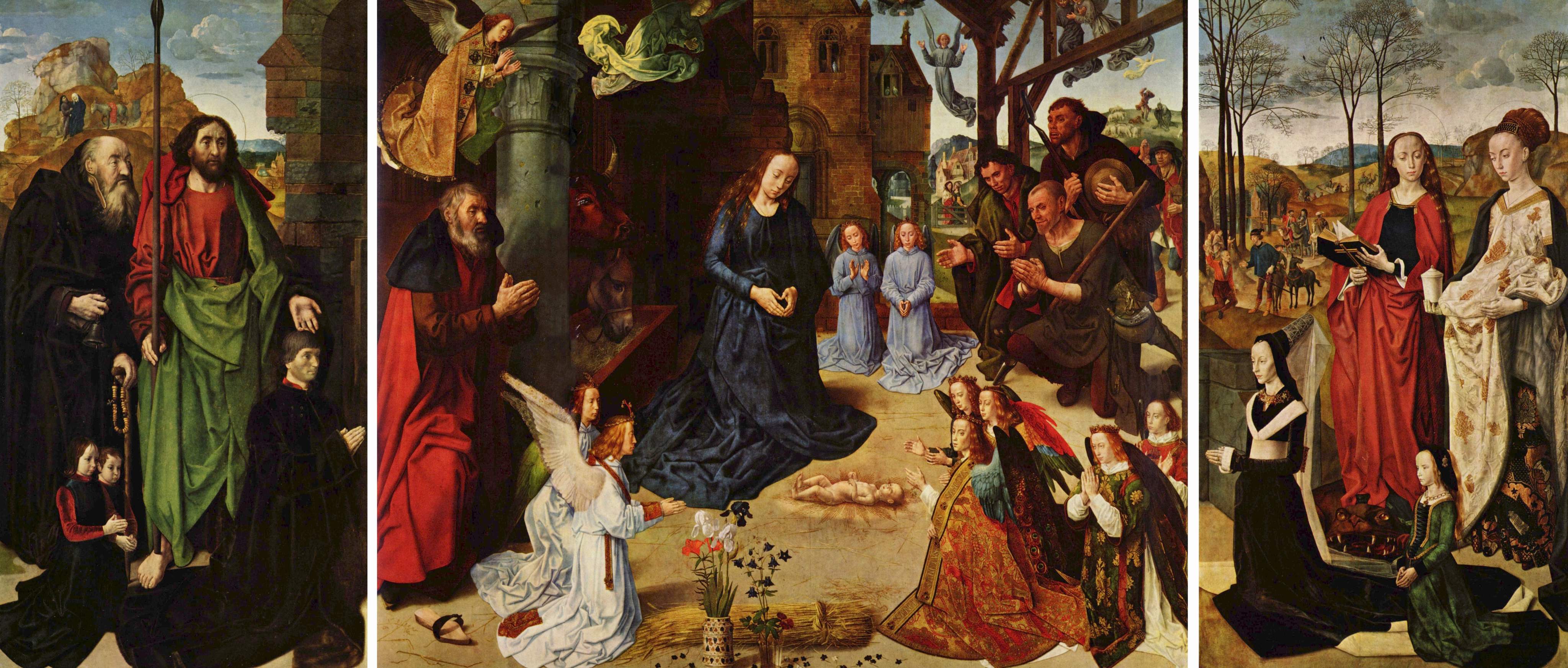Life
Birth: Hugo van der Goes does not have an exact record for his birth but he is usually considered as born at Ghent or its environs in around 1440.

Early: Nothing documented about Hugo van der Goes, until he became a master in the painters’ guild of Ghent in1467. In the future years, he was required to make some decorations for events like papal blazons. For instance, 1468, van der Goes created decorations in the town of Bruges for celebrating the marriage between Charles the Bold and Margaret of York. Thereafter, he became more and more famous.
Highpoint: In around 1477, Van der Goes had achieved sizable reputations and secured important commissions from the Burgundian court, the church, and the rich peoples. However, Van der Goes choose to be a frater conversus (a lay brother) when it was the peak of his career. At the monastery, he had certain privileges such as allowed to continue to drink wine and to work on the painting.

Death: Hugo van der Goes died in the Rood Klooster in 1482. According to the cloister chronicler Ofhuys, Hugo van der Goes was suffering in an acute depression. After Hugo van der Goes unsuccessfully tried to suicide, his companions brought him back to Brussels and then to the Rood Klooster. Unfortunately, he died shortly thereafter and was buried in the atrium of the cloister.
Art Style
The early styles of Hugo van der Goes’s works are usually considered as a kind of illusionism which uses rich colours and a single vanishing-point perspective to build up a detailed description in pictures. For example, the centre panel of the Portinari Altarpiece.

In addition, the Portinari Altarpiece is the sole of surviving works that can be confidently linked to Hugo van der Goes. Later, his style pays more attention to the artificiality which built by the limited range of colours and the expressive distortion of figures as well as space. Afterward, he is also an important artist in portrait drawing. He made the portrait more real by increasing the details and shadings on the face and then let them look at something to make those characters look like having an experience of vision. Those developing techniques of the portrait drawing are usually considered as an individually cognitive awakening of human beings in those periods.
In my opinion, Hugo ver der Goe was one of the first pioneers who begin to challenge the unexplored region of art. However, he was still only one of the traditional artists who work for the church. Although there are a few changes in the portrait drawing and overall composition, most of his works still tightly connect with the style of Christian art. There is nothing much about his personal art pursuit and understanding in the inner of his works. He had not really expressed his thoughts and cognition in his arts yet. All in all, Hugo ver der Goe who is good enough as a successful artist in the early Renaissance.
References
https://en.wikipedia.org/wiki/Monforte_Altarpiece https://en.wikipedia.org/wiki/Adoration_of_the_Shepherds_(Hugo_van_der_Goes)
https://en.wikipedia.org/wiki/Portinari_Altarpiece